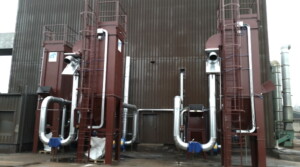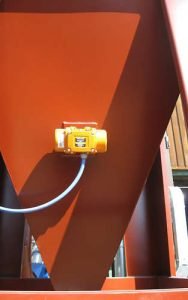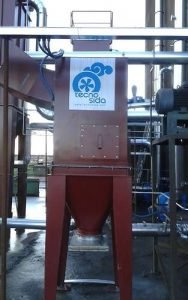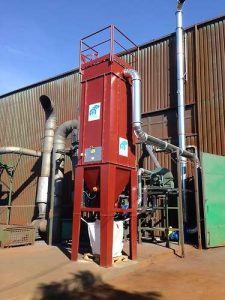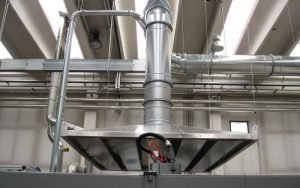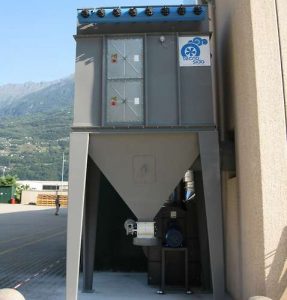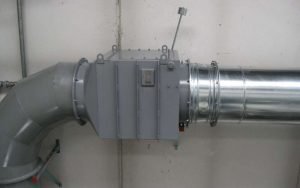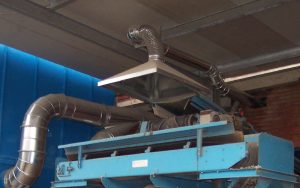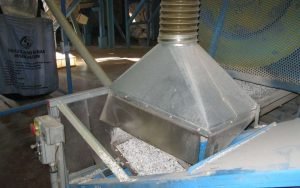ATEX plants explosive dust treatment in metallurgical industry
Presentation of three ATEX plants in metalworking
ATEX plants are designed to treat air pollutants in potentially explosive atmospheres. ATEX bag filters are important components of these plants because they help to filter explosive dust.
Read our dedicated solutions to discover more about how ATEX plants work and about the importance of ATEX bag filters in the metalworking sector.
Application 1: special metal processing in Poland
The company is one of the world’s leading manufacturers of metal wools and fibres, primarily marketed in the main European and global countries. The marketed products include steel fibres (also stainless steel fibres), copper, brass, bronze, zinc and aluminium wool. The company contacted Tecnosida® for problems linked to fire, explosions and emissions which did not comply with the directives in their production plant in Poland.
Gallery
Tecnosida® immediately arranged a technical inspection on site. It was noted that the explosions were caused by the sparks generated during the grinding phase. The resulting dust was easily auto-ignited and had a strong explosive behaviour, which contributed to the deflagration phenomenon.
Previous solutions implemented by third-party companies:
- a cyclone dust collector was initially implemented to treat the emissive flow. However, tests revealed that this technology was not suitable to solve the problem, since the very fine dust could not be abated;
- secondly, a bag dust collector was implemented. This solution was also ineffective because, even though the bags were made of fireproof material, they frequently caught fire;
- in the third attempt, a wet fume treatment system was used. The following problems were immediately observed:
- issues in separating the wet matrix from the residues;
- clogging of the filling bodies;
- issues in disposing of the mineral lubricant used for cutting.
ATEX plants for treatment of explosive dust
Considering the previous inefficient solutions, Tecnosida® designed a suction and dedusting ATEX plant. Below are the main system components:
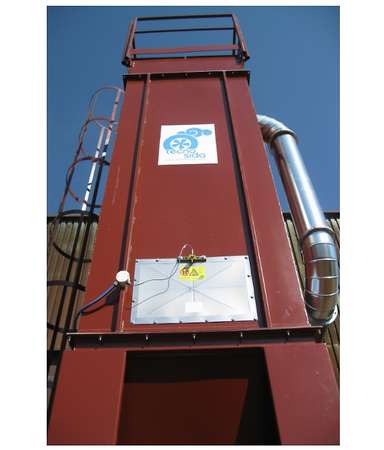
- Dustdown® bag filter with breakage panels and shutter system with non-return valves in compliance with the ATEX Directive requirements;
- decantation system with spark detection and automatic extinguishing;
- flow evacuation system as additional safety system;
- centrifugal fan with motor and belt transmission.
The specialized technicians of Tecnosida® carried out 100% of the installation.
During the testing phase, Tecnosida® also proceeded to set the safety systems to prevent fire/explosion. The technical tests carried out on the pilot plant showed that the emissions were significantly lower than the limits set by the directive. Considering the excellent results, the customer commissioned us four other equivalent suction systems.
Application 2: welding and metalworking
The customer is a company which has been operating for decades in the production of heating and air conditioning systems. Based on the different needs of its customers, it offers various models of boilers and burners with different features. The production of such a wide range of products implies the internal carrying out of activities including cutting, welding and metalworking in general. These operations involve the emission of pollutants which are harmful for the operators and the surrounding environment. Tecnosida® was contacted to solve the problem linked to fume emissions deriving from metal (aluminium) welding in various workstations (7-8 workstations). Considering the potentially explosive nature of the pollutant, the customer asked to implement an ATEX plant.
ATEX cartridge plants for treatment of aluminium dust and fumes
Tecnosida® accepted the request and carried out the first technical inspection, which highlighted the dangerousness of the treated product: aluminium processing generates highly explosive dust and fumes.
To solve this problem, Tecnosida® created a suction and filtering system for six workstations (four of which work simultaneously), one repair station and four welding stations. The offered solution is based on two steps:
- first step: appropriate design of collection points located on the various welding stations through the construction of hoods made of galvanized steel, appropriately sized according to the shape of the different workstations. Thanks to the use of these collection points, the pollutants can be sucked directly from the source and are then conveyed into the filtering system through dedicated pipes;
- second step: the polluted air sucked by the hoods is conveyed into a self-cleaning cartridge filter made of welded carbon steel enclosure and located outside the warehouse. It is equipped with a discharge system with a rotary valve for compartmentalization. The entire system is therefore able to filter fumes and dust emitted during the production process.
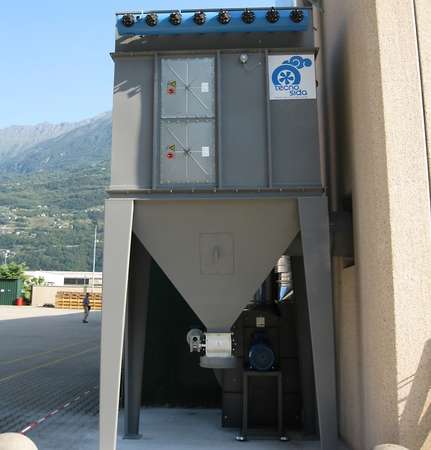
Following the customer’s request and in compliance with the European Directive concerning potentially explosive atmospheres, ATEX equipment has been implemented during the design phase, such as:
- explosion vents made of stainless steel and located on the cartridge filter to guarantee safety;
- explosion isolation flap valve: located inside the conveying pipe, it avoids the propagation of a possible explosion inside the suction system;
- ATEX discharge rotary valve for isolation;
- centrifugal fan in non-sparking ATEX execution.
Application 3: grinding and recovery of disused household appliances
The customer is part of a metalworking group operating worldwide in the field of recovery and recycling of metals, paper, chemicals and hazardous waste. The site in which the plant is installed recovers materials from fridges, computers, televisions and other products. A high emission of potentially explosive dust, including aluminium dust, has been detected on the grinding line of disused fridges. The customer contacted Tecnosida® to solve this problem and also requested changes in the existing pneumatic conveying system of previously selected materials (aluminium, copper and brass).
After an adequate technical inspection and considering the explosive nature of aluminium dust, Tecnosida® designed a suction and treatment system in compliance with the ATEX European Directive. It is composed of:
- Appropriately sized suction hoods for localized collection of dust emitted during the various phases of the production process;
- Connection pipes conveying the airflow coming from the hoods into the separating cyclones. They represent the first phase of the abatement process because, thanks to centrifugal force, they are able to separate coarse metal dust inside the treated airflow;
- Dustdown® self-cleaning bag filter for the abatement of fine and ultrafine residual dust. It is equipped with an upper chamber with the bag cleaning system and it has been supplied in the ATEX version to make it suitable for treatment of potentially explosive materials. It is equipped with ATEX certified products such as antistatic bags, solenoid valves and explosion vents.
As we have seen, the plant and all its components are ATEX certified. The centrifugal fan with reversed blades is also in ATEX execution and is equipped with an anti-spark nozzle. A fire damper has been placed on the pipes as safety element. In case of fire it closes, avoiding the flame propagation in the aspiration line. The ATEX plant has been manufactured in compliance with the italian BAT (D.MF.01) and it reduced pollutant emissions, solving the customer’s problems.
